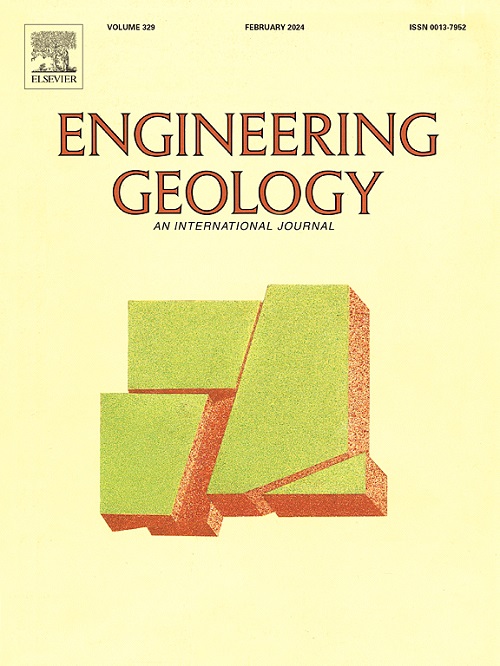Analysis of fracture spatial distributions and fast reconstruction of discrete fracture networks model based on non-parametric kernel density estimation method
IF 6.9
1区 工程技术
Q1 ENGINEERING, GEOLOGICAL
引用次数: 0
Abstract
Fracture spatial distributions significantly impact the mechanical properties of rocks and play a vital role in subsurface flow and transmission. However, many studies generate random geometrical distributions for fractures, leading to unrealistic subsurface models. This paper describes a new method for analyzing and modeling fracture spatial distributions based on borehole and outcrop observations. The center of gravity of the fracture is used to define the fracture position, and the non-parametric kernel density estimation is used to analyze the cluster distribution of the fractures in space. Then, the Fast Fourier Transform (FFT) is utilized to rapidly determine the fracture position. Finally, the length and occurrence of fractures are generated by the Monte Carlo method, and the discrete fracture network (DFN) is reconstructed in Matlab. This approach is applied to three field examples. Numerical simulations demonstrate that the generated fracture morphology exhibits flow behavior similar to the original fracture network. Furthermore, it is found that the fractal dimension of the fracture center point (C) can characterize the spatial distribution of fractures and shows a logarithmic normal relationship with fracture permeability. This modeling method accelerates the speed of complex DFN reconstruction and improves the ability to quantify the permeability of fractured rock mass.
基于非参数核密度估计方法的裂缝空间分布分析及离散裂缝网络模型的快速重建
裂缝的空间分布对岩石的力学性质有重要影响,对岩石的地下流动和传输起着至关重要的作用。然而,许多研究生成的裂缝几何分布是随机的,导致地下模型不切实际。本文介绍了一种基于钻孔和露头观测的裂缝空间分布分析和建模的新方法。利用裂缝的重心来定义裂缝位置,利用非参数核密度估计来分析裂缝在空间上的聚类分布。然后,利用快速傅里叶变换(FFT)快速确定裂缝位置。最后,利用蒙特卡罗方法生成裂缝的长度和分布,并在Matlab中重构离散裂缝网络(DFN)。该方法应用于三个现场实例。数值模拟表明,生成的裂缝形态表现出与原始裂缝网络相似的流动行为。此外,裂缝中心点C的分形维数可以表征裂缝的空间分布,并与裂缝渗透率呈对数正态关系。该建模方法加快了复杂DFN重构的速度,提高了对裂隙岩体渗透率的量化能力。
本文章由计算机程序翻译,如有差异,请以英文原文为准。
求助全文
约1分钟内获得全文
求助全文
来源期刊

Engineering Geology
地学-地球科学综合
CiteScore
13.70
自引率
12.20%
发文量
327
审稿时长
5.6 months
期刊介绍:
Engineering Geology, an international interdisciplinary journal, serves as a bridge between earth sciences and engineering, focusing on geological and geotechnical engineering. It welcomes studies with relevance to engineering, environmental concerns, and safety, catering to engineering geologists with backgrounds in geology or civil/mining engineering. Topics include applied geomorphology, structural geology, geophysics, geochemistry, environmental geology, hydrogeology, land use planning, natural hazards, remote sensing, soil and rock mechanics, and applied geotechnical engineering. The journal provides a platform for research at the intersection of geology and engineering disciplines.
 求助内容:
求助内容: 应助结果提醒方式:
应助结果提醒方式:


